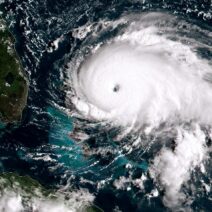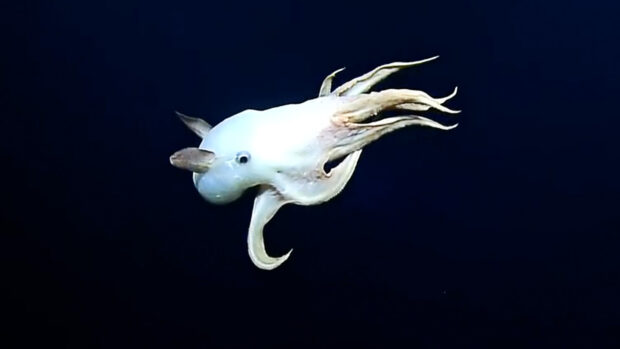The deep sea is a habitat characterized by extreme conditions, where the pressure is formidable, light is nearly nonexistent, and temperatures are often frigid. Within this abyssal environment lives the Dumbo octopus, a unique cephalopod renowned for its distinctive ear-like fins resembling the Disney character Dumbo. This intriguing creature has developed several remarkable adaptations to conserve energy, an essential survival tactic in an ecosystem where food is scarce and energy efficiency is paramount.
One fundamental aspect of the Dumbo octopus’s energy conservation strategy is its unique mode of locomotion. Unlike other cephalopods that rely predominantly on jet propulsion, the Dumbo octopus utilizes its large, fleshy fins for gentle gliding. This mode of movement is energy-efficient. By minimizing muscular contractions and avoiding the rapid expulsion of water, it conserves energy that would otherwise be expended in more strenuous swimming efforts. This adaptation allows the Dumbo octopus to traverse vast distances in search of food without depleting its energy reserves too rapidly.
There is a fascinating relationship between the Dumbo octopus and its surrounding environment that further aids in energy conservation. The ocean currents in the deep sea play a pivotal role in transporting this mollusk. By strategically positioning itself within these currents, the Dumbo octopus can drift with the flow, expending minimal energy. This passive movement strategy allows it to cover significant ground while scavenging for prey that includes small fish, crustaceans, and various detritus that sinks from above.
Adaptations extend beyond locomotion and environmental navigation; they also encompass physiological traits. The Dumbo octopus boasts a relatively low metabolic rate, a crucial attribute when considering the sporadic availability of food in deep-sea ecosystems. This lowered metabolic activity means that when food sources become scarce, the octopus can survive longer periods without consuming prey. This energy conservation mechanism is vital, especially in a habitat where meals can be infrequent and unpredictable.
The Dumbo octopus also exhibits a remarkable ability to camouflage itself within its surroundings. This capability not only aids in evading predators but also in reducing metabolic stress. By mimicking the colors and textures of its environment, it reduces the need for rapid movements that could otherwise expend energy. Remaining undetected allows the Dumbo octopus to remain still for extended periods, further conserving vital energy resources.
Another critical aspect lies in the organism’s reproductive strategies. Many cephalopods have short lifespans and reproduce en masse, investing considerable energy into spawning. In contrast, the Dumbo octopus tends to spawn only a few times during its life and produces only a small number of eggs. This strategy reduces the energy expended on reproduction at any one time, allowing the adults to conserve energy for foraging and survival. Furthermore, after laying eggs, the female typically dedicates herself to guarding them without feeding, a strategy that underscores the importance of energy conservation for future generations.
Social dynamics also play a role in energy conservation. Dumbo octopuses are generally solitary creatures, which reduces the competition for food and territorial disputes that can drain energy reserves. This solitary behavior reflects a broader evolutionary strategy that favors energy conservation in an environment where resources are limited. By maintaining a solitary lifestyle, the Dumbo octopus minimizes unnecessary interactions that could otherwise lead to energy expenditure.
Adaptation to environmental challenges is not limited to physical traits. The Dumbo octopus possesses an advanced sensory system that allows it to detect changes in the environment. Its keen sense of smell helps it locate food sources from a distance while minimizing the energy involved in active searching. This heightened awareness of its surroundings facilitates effective hunting tactics while preserving the energy required for locomotion and other activities.
The Dumbo octopus also partakes in opportunistic feeding behaviors, another strategy crucial for its energy conservation. While it primarily feeds on benthic prey, it remains alert to the availability of pelagic organisms. This flexibility in diet reduces dependency on a single food source, enabling it to adapt to changing prey dynamics in the deep-sea environment. By diversifying its food intake, the Dumbo octopus can efficiently use whatever energy resources are available to it, thus optimizing its nutritional intake based on prevailing conditions.
Ecologically, the role that the Dumbo octopus plays within its habitat is vital for maintaining a balance in the deep-sea ecosystem. As both predator and prey, it contributes to the cycling of energy through the food web. By successfully navigating its environment with energy conservation mechanisms in place, this cephalopod indirectly supports the health of marine biodiversity. If the Dumbo octopus thrives, the consequences ripple outward, impacting numerous species within its habitat.
In summary, the Dumbo octopus embodies a range of adaptations aimed at conserving energy in one of Earth’s most challenging environments. From its efficient locomotion and low metabolic rate to its reproductive strategies and opportunistic feeding behaviors, every trait has evolved to ensure survival in the deep sea. Understanding the energy conservation strategies of such remarkable creatures not only enhances our knowledge of marine biology but also underscores the importance of preserving these unique ecosystems amid ongoing climate change. The Dumbo octopus stands as a testament to life’s resilience and ingenuity in the face of adversity.






